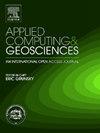Current progress in subseasonal-to-decadal prediction based on machine learning
IF 3.2
Q2 COMPUTER SCIENCE, INTERDISCIPLINARY APPLICATIONS
引用次数: 0
Abstract
The application of machine learning (ML) techniques to climate science has received significant attention, particularly in the field of climate predictions, ranging from sub-seasonal to decadal time scales. This paper reviews recent progress of ML techniques employed in climate phenomena prediction and the enhancement of dynamic forecast models, which provide valuable insights into the great potentials of ML techniques to improve climate prediction capabilities with reduced computational time and resource consumption. This paper also discusses several major challenges in the application of ML to climate prediction, including the scarcity of datasets, physical inconsistency, and lack of model transparency and interpretability. Additionally, this paper sheds light on how climate change impacts ML model training and prediction, and explores three key areas with potential breakthroughs: large-scale climate models, knowledge discovery driven by ML, and hybrid dynamical-statistical models, underscoring the important role of the integration of “ML and dynamical models” in building a bridge between the artificial intelligence and climate science.
基于机器学习的副季节至十年期预测的最新进展
机器学习(ML)技术在气候科学中的应用,特别是在气候预测领域(从亚季节到十年时间尺度)的应用,已受到极大关注。本文回顾了机器学习技术在气候现象预测和动态预报模式增强方面的最新进展,这些进展提供了宝贵的见解,说明了机器学习技术在减少计算时间和资源消耗、提高气候预测能力方面的巨大潜力。本文还讨论了将 ML 应用于气候预测的几个主要挑战,包括数据集稀缺、物理不一致性以及模型缺乏透明度和可解释性。此外,本文还揭示了气候变化对 ML 模型训练和预测的影响,并探讨了可能取得突破的三个关键领域:大规模气候模型、ML 驱动的知识发现以及动态-统计混合模型,强调了 "ML 与动态模型 "的集成在搭建人工智能与气候科学之间桥梁的重要作用。
本文章由计算机程序翻译,如有差异,请以英文原文为准。
求助全文
约1分钟内获得全文
求助全文
来源期刊

Applied Computing and Geosciences
Computer Science-General Computer Science
CiteScore
5.50
自引率
0.00%
发文量
23
审稿时长
5 weeks
 求助内容:
求助内容: 应助结果提醒方式:
应助结果提醒方式:


